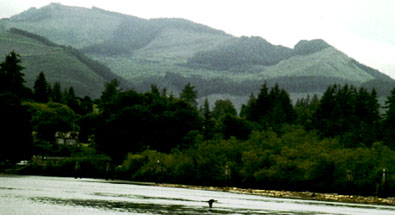 Environmental
Science
Environmental
ScienceNavigating the site:
"Man was the measure of all things until he became the only measure of everything."
JVS with apolgies to Protagoras
Science, Systems, Matter, and Energy,
A Place to start an inquiry into the adequacy of the Earth's living systems, sources and places.
G. Tyler Miller, Environmental Science,
Tenth Edition, Pacific Grove, Ca.: Thomson/BrooksCole Publishing, 2004.
G. Tyler Miller’s Facts:
An environmental chemists’ viewpoint.
78 million people born between 1946 and 1964 in the USA are called the
Baby Boom
Baby bust is the number of people born in the US since 1965
44% of US population growth annually is from migration (935,000 in 1998.)
The estimated value
of Women’s work in the home that goes unpaid is $11 trillion annually
30,000 edible plant species exist on earth.
15 edible species feed most of the earth’s people (wheat, rice, corn & potato)
11% of the Earth’s
land area is suitable for population to cultivate the soil for crops.
40% of the world’s food is from irrigated cropland due to insufficient
or irregular rainfall.
650,000 Americans are full-time farmers, or 1.8 % of the population, feeding
140 people!
25% of the world’s food and fiber needs are produced by US farmers.
17% of the commercial energy produced in the US is consumed by agriculture.
10 units of energy (fossil fuels largely) is required to make and deliver
one unit of food energy.
More than 50% of the world’s cropland is used to grow livestock feed;
19% in the US.
2% of US cropland is used to produce fruits and vegetables.
37% of the world grain and 70% of the Us grain produced is consumed by
livestock.
The
Hyrological Dilemma:
50%
or more of the water withdrawn annually in the US is consumed by livestock.
Grazing livestock accounts for 14% of the erosion of the US cropland.
10 - 18 million people annually die from poor nutrition or related causes.
25% of the food produced in the USA is wasted.
17% of the world’s cropland is irrigated and irrigation water accounts
for 65% of the worlds’ wateruse.
41% of the water in the US and 85% of the water in western arid regions
(USA) is used for irrigation.
40% of the world’s population lives in areas subject to prolonged
droughts.
25% of the groundwater withdrawn in the USA is not replenished.
1 leaky U.S. toilet can account for as much as 22,000 gallons of water
annually (1 in 4 leaks).
On 33% of the world’s cropland soil is being eroded faster than it
is allowed to form.
Miller, on the significance
of biological diversity
3 analogies: ecology, people, & forests.
The existence
of diversity in biocommunities & the richness of species in those
communities is related to genetic variability -- which is like an insurance
policy against a die off of wilderness.
The
focus issue is risk:
who is at greater risk people or wildlife?
Since wildlife
are indicators of biological health, they reveal the ecological conditions
that sustain life, humans & the economy.
The environment:
Ecological integrity refers to the functional capacity of any ecosystem
to assimilate further degradation while continuing to sustain critical
keystone species & diverse food chains.
The human body:
Disease in arteries & a protein {APO A-1 Milano} that manages the
control of plaque (2 centuries old genetic mutation; 1780 a progenitor
passed it on to 11 generations of descendants!) in the onset of cardiovascular
disease (artherosclerosis) in the presence of high concentrations of plaque
clogging cholesterol.
The Pacific Northwest rain forests:
Assimilative capacity of old growth forests to adjust to sustained yield forestry practices:
1.) Yew trees are only in old forests,
2.) Tew trees produce a medicinal product “Taxol” in their bark,
3.) Lichens (symbiotic algae + fungus) indicate good air quality,
4.) Spotted Owls require extensive old growth acreage,
5.) Salmon fisheries require clear, cool streams.
What is the conflict caused by in the case of Pacific Lumber Co.?
Have sustained yield forestry practices been at fault in the controversy over the northwest coast’s public forests?


